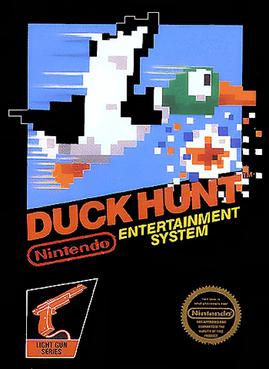
Duck Hunt is a 1984 light gun shooter video game developed and published by Nintendo for the Nintendo Entertainment System (NES) video game console and the Nintendo Vs. System arcade hardware. The game was first released in April 1984, in Japan for the Family Computer (Famicom) console and in North America as an arcade game. It became a launch game for the NES in North America in October 1985, and was re-released in Europe two years later.

Mahjong or mah-jongg is a tile-based game that was developed in the 19th century in China and has spread throughout the world since the early 20th century. It is played by four players. The game and its regional variants are widely played throughout East and Southeast Asia and have also become popular in Western countries. The game has also been adapted into a widespread online entertainment. Similar to the Western card game rummy, mahjong is a game of skill, strategy, and luck. To distinguish it from mahjong solitaire, it is sometimes referred to as mahjong rummy.
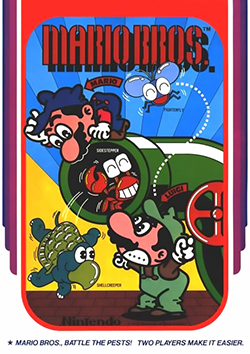
Mario Bros. is a 1983 arcade video game developed and published by Nintendo. It was designed by Shigeru Miyamoto and Gunpei Yokoi, Nintendo's chief engineer. Italian twin brother plumbers Mario and Luigi exterminate creatures emerging from the sewers by knocking them upside-down and kicking them away. The Famicom/Nintendo Entertainment System version is the first game produced by Intelligent Systems. It is part of the Mario franchise, but originally began as a spin-off from the Donkey Kong series.
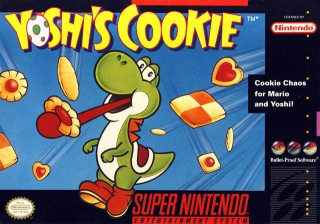
Yoshi's Cookie is a 1992 tile-matching puzzle video game developed by Tose and published by Nintendo for the NES and Game Boy platforms in 1992. A Super NES version was released the following year, developed and published by Bullet-Proof Software.
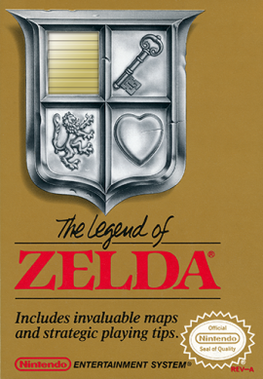
The Legend of Zelda, originally released in Japan as The Hyrule Fantasy: Zelda no Densetsu, is an action-adventure game developed and published by Nintendo. The first game of The Legend of Zelda series, it is set in the fantasy land of Hyrule and centers on an elf-like boy named Link, who aims to collect the eight fragments of the Triforce of Wisdom in order to rescue Princess Zelda from Ganon. During the course of the game, the player controls Link from a top-down perspective and navigates throughout the overworld and dungeons, collecting weapons, defeating enemies and uncovering secrets along the way.

Wrecking Crew is an action game developed and published by Nintendo. Designed by Yoshio Sakamoto, it was first released as an arcade video game for the Nintendo VS. System in 1984, titled Vs. Wrecking Crew with a simultaneous two-player mode. It was released as a single-player game for the Family Computer (Famicom) console in 1985, and as a launch game for the Nintendo Entertainment System (NES) later that year. A sequel, Wrecking Crew '98, was released in Japan in 1998 for the Super Famicom.

Akagi: Yami ni Oritatta Tensai is a Japanese manga series written and illustrated by Nobuyuki Fukumoto. First published in 1991 in Takeshobo's weekly magazine Kindai Mahjong, it is a spin-off prequel of the author's previous work, Ten. It revolves around Shigeru Akagi, a boy who defeats yakuza members well versed in mahjong at 13. He returns to the game six years later, carrying a mythical status and still impresses his opponents.

The Pokémon Mini is a handheld game console that was designed and manufactured by Nintendo and themed around the Pokémon media franchise. It is the smallest game system with interchangeable cartridges ever produced by Nintendo, weighing just under two and a half ounces. It was first released in North America on November 16, 2001, and was only available for purchase at the Pokémon Center and via its website. This was followed by releases in Japan on December 14, 2001, and in Europe on March 15, 2002. The system was released in three colors: Wooper Blue, Chikorita Green, and Smoochum Purple.

Gumshoe is a light gun shooter video game developed and published by Nintendo for the VS. System arcade hardware and the Nintendo Entertainment System console. It was released in 1986 in North America and in 1988 in Europe. Unusual for a Nintendo game, it was not released in Japan. It was designed by Yoshio Sakamoto.

Nintendogs is a real-time pet simulation video game developed and published by Nintendo for the Nintendo DS handheld video game console. It was released in Japan, and was later released in: North America, Australia, New Zealand, Europe and other regions. It was originally released in three different versions: Dachshund & Friends, Lab & Friends and Chihuahua & Friends. It has been re-released twice, first as a bundled release with a special edition Nintendo DS with a new version called Nintendogs: Best Friends and later as Nintendogs: Dalmatian & Friends.

Tennis is a sports video game developed by Nintendo in 1983, and released for the Family Computer (Famicom) in 1984. The arcade game version Vs. Tennis was also released for the Nintendo VS. System in 1984, becoming a hit at Japanese and American arcades that year; it was the sixth top-performing arcade game of 1984 in the United States. Tennis is one of 17 launch games for the Nintendo Entertainment System (NES) in North America and Europe. The game was re-released for the Game Boy as a launch game in North America.

Pinball is a pinball video game developed by Nintendo and HAL Laboratory and published by Nintendo for the Nintendo Entertainment System. It is based on a Game & Watch unit of the same name, and was first released for the Famicom in Japan in 1984. It was later released as an arcade game for the Nintendo VS. System in Japan and North America in 1984. In 1985, it was a launch game for the Nintendo Entertainment System in North America.

Mario & Wario is a puzzle video game developed by Game Freak and published by Nintendo for the Super Famicom. It was released exclusively in Japan in 1993. Mario & Wario requires the Super Famicom Mouse accessory to play. Despite being a Japan-only release, the game is entirely in English.

AQ Interactive, Inc. was a Japanese video game developer and publisher. AQ stands for Artistic Quality. It was the parent company of the developers Artoon, Cavia and feelplus, and most recently the U.S. publisher Xseed Games. AQ Interactive and its subsidiaries produced games both under the AQ Interactive name, as well as developing for other publishers such as Microsoft Studios and Nintendo.
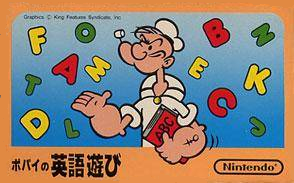
Popeye no Eigo Asobi is a 1983 edutainment platform video game developed and published by Nintendo for the Family Computer. The game was based on the comic strip of same name created by E. C. Segar and licensed from King Features Entertainment. It is a spin-off of the Popeye arcade game made by Nintendo. It was released exclusively in Japan. It was followed by the similar Donkey Kong Jr. Math, which was released about one month later. This game was never released in North America because of the majority of English speakers in the United States and Canada and a corresponding version that would teach players Japanese was not created due to the technical limitations of the Nintendo Entertainment System along with the lack of popularity in the West to learn Japanese aside from cultural or business purposes in the 1980s.

SETA Corporation was a Japanese computer gaming company, founded on October 1, 1985 and dissolved on February 9, 2009. SETA was headquartered in Kōtō, Tokyo, with a branch in Las Vegas, Nevada.

Yakuman DS is a Mahjong video game developed by Nintendo and Mediakite and published by Nintendo for the Nintendo DS. It is a successor to Nintendo's 1989 Game Boy game Yakuman. It features modern Japanese Mahjong rules and various characters from the Mario video game series.
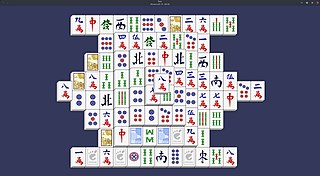
Mahjong solitaire is a single-player matching game that uses a set of mahjong tiles rather than cards. It is more commonly played on a computer than as a physical tabletop game.

Yakuman (役満) is a 1989 mahjong video game developed by Intelligent Systems and published by Nintendo for its handheld Game Boy as one of the Japanese launch titles. It is the first entry in a series of first-party Japanese mahjong games on Nintendo systems, with sequels on the Famicom, Game Boy Advance, DS, Wii, Wii U, and 3DS.

Mahjong Sisters is a 1986 eroge mahjong arcade video game developed and published exclusively in Japan by Toaplan. In the game, the players face off against a group of three sisters in a series of mahjong matches. As of 2019, the rights to the title is owned by Tatsujin, a company founded in 2017 by former Toaplan member Masahiro Yuge and now-affiliate of Japanese arcade manufacturer exA-Arcadia alongside many other Toaplan IPs.



















